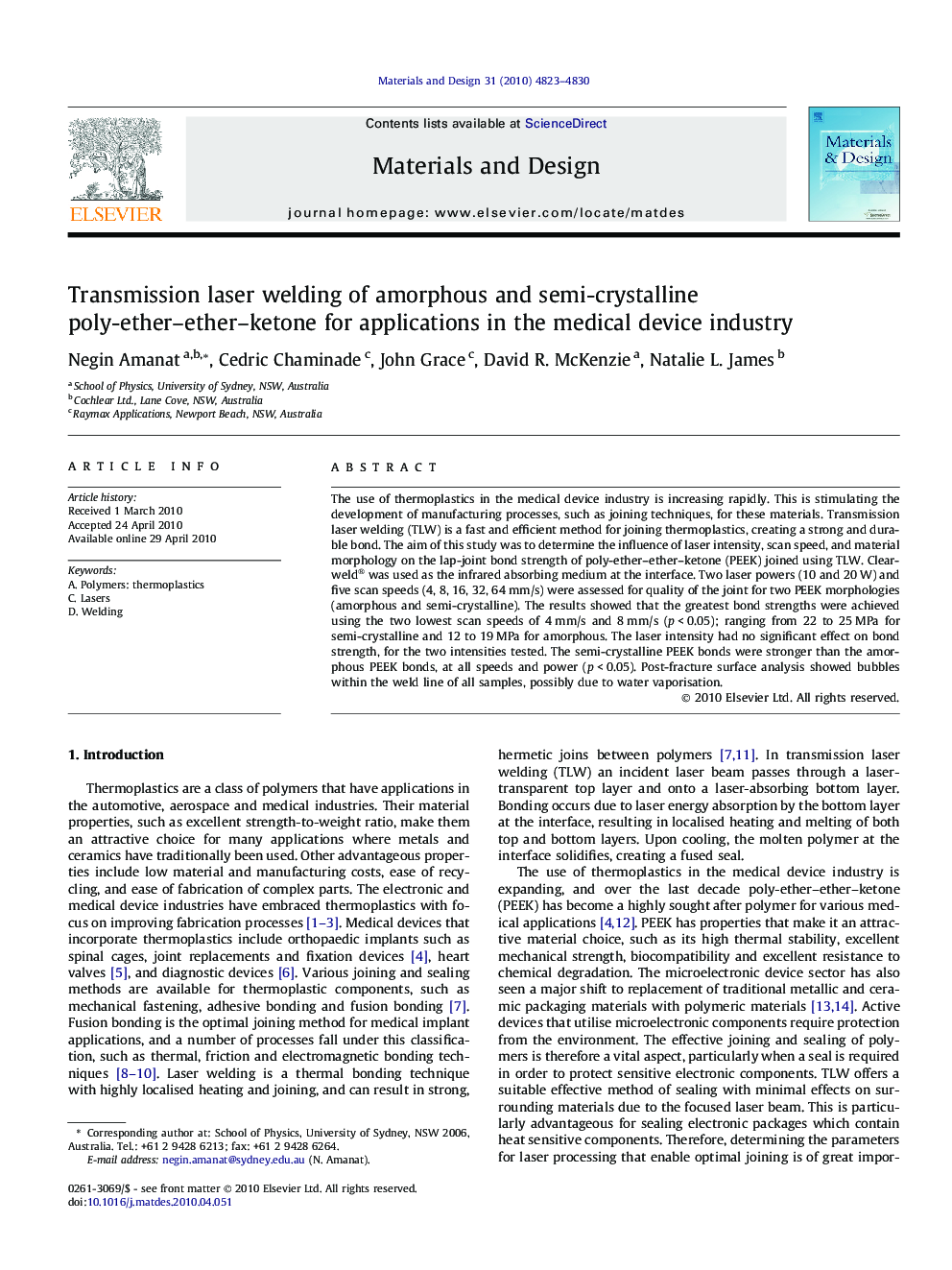| Article ID | Journal | Published Year | Pages | File Type |
|---|---|---|---|---|
| 831776 | Materials & Design (1980-2015) | 2010 | 8 Pages |
The use of thermoplastics in the medical device industry is increasing rapidly. This is stimulating the development of manufacturing processes, such as joining techniques, for these materials. Transmission laser welding (TLW) is a fast and efficient method for joining thermoplastics, creating a strong and durable bond. The aim of this study was to determine the influence of laser intensity, scan speed, and material morphology on the lap-joint bond strength of poly-ether–ether–ketone (PEEK) joined using TLW. Clearweld® was used as the infrared absorbing medium at the interface. Two laser powers (10 and 20 W) and five scan speeds (4, 8, 16, 32, 64 mm/s) were assessed for quality of the joint for two PEEK morphologies (amorphous and semi-crystalline). The results showed that the greatest bond strengths were achieved using the two lowest scan speeds of 4 mm/s and 8 mm/s (p < 0.05); ranging from 22 to 25 MPa for semi-crystalline and 12 to 19 MPa for amorphous. The laser intensity had no significant effect on bond strength, for the two intensities tested. The semi-crystalline PEEK bonds were stronger than the amorphous PEEK bonds, at all speeds and power (p < 0.05). Post-fracture surface analysis showed bubbles within the weld line of all samples, possibly due to water vaporisation.
